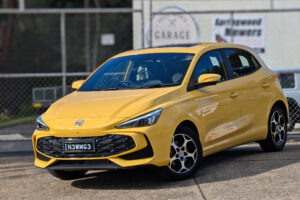
Triumph Spitfire MkII
The Triumph car originated as a sideline for the successful motorcycle business which
unfortunately went bankrupt in 1939, and Triumph was finally bought up by Standard in
1944. In 1946 the first Standard-Triumph car appeared. It was the 1800 Roadster which
was aimed at the export market and had three-abreast seating, a steering-column gear
change and was the last car in the world to offer a `dickey’ seat behind the driver. Initially it
was fitted with a 1776cc engine exactly as supplied by Standard for the Jaguar 1.5-litre
models, but from 1948 it was equipped with the 2088cc Standard Vanguard engine and
was called the 2000 Roadster.
To fill an obvious gap in the US sportscar market between the MG TD and the Jaguar
XK120 Standard developed a new sportscar designed around the Vanguard engine and
gearbox and so the TR series of Triumphs came into being.
As the TRs gradually became larger, faster and more powerful, Triumph determined to fill
the smaller sportscar void created with a new, smaller sportscar, the Spitfire, which would
also compete against the popular Sprite/MG Midget cars from the BMC stable. The Spitfire
design utilised a rather unique steel backbone-type chassis frame with a two-seater body
adapted from a Michelotti style with the componentry borrowed heavily from the Triumph
Herald sedan parts bin and modified to suit. This included the engine and transmission as
well as the all-independent suspension and the steering gear.
Initially the Spitfire developed 47kW from its 1147cc engine with a top speed of 145km/h,
and various options were offered including overdrive, wire wheels and a detachable
hardtop. Early in 1965 the Mark II Spitfire was launched with a six percent increase in
power and two years later the Mark III entered the marketplace with a new 1296cc engine
which boasted 56kW power output giving the car a top speed close to 160km/h.
At the end of 1970 the Spitfire became Mark IV, with a different, swing-spring, type of
suspension resulting in very much improved road holding, and a restyled body shell which
featured a cut-off tail, and a more angular optional hardtop.
The final derivative, produced from late 1974 to 1980, had a 1493cc engine, a genuine
160km/h top speed when no anti-emission gear was fitted. All in all, the Spitfire was an
extremely successful car with a total of over 314,000 being produced during the 18-year
production life of the marque.








